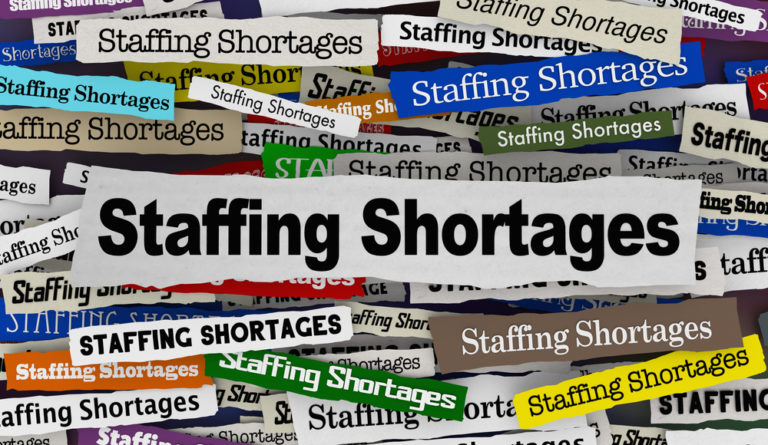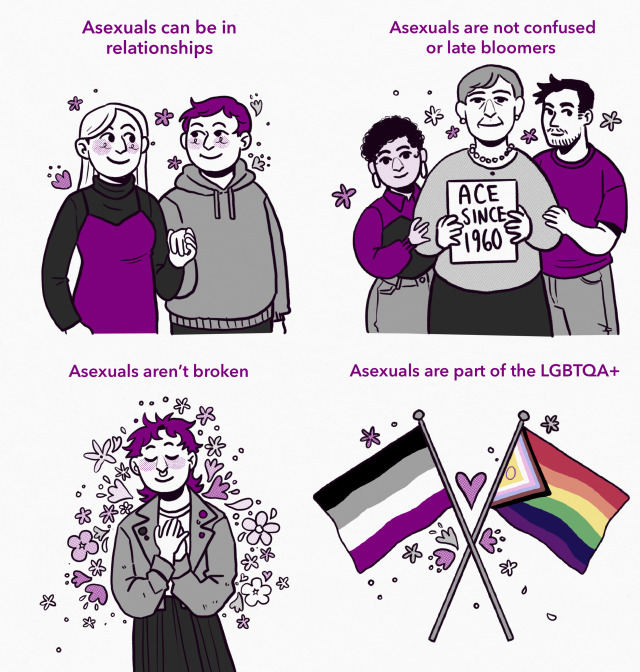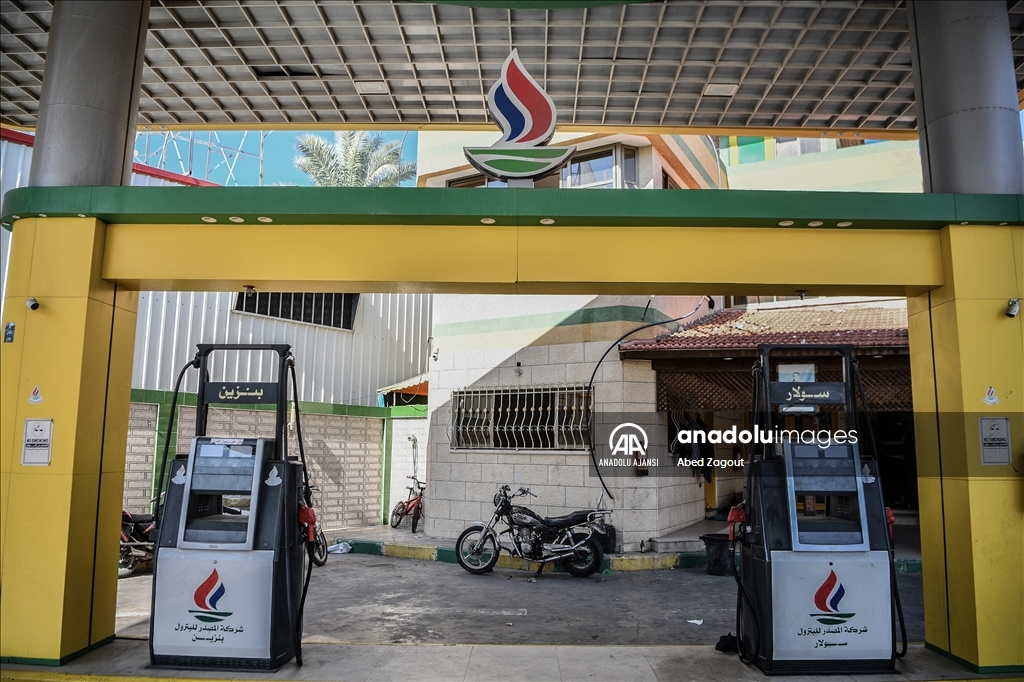Staffing Shortages And Service Reductions In Libraries

Table of Contents
Causes of Staffing Shortages in Libraries
Several interconnected factors contribute to the pervasive staffing shortages in libraries. Addressing these underlying issues is crucial to resolving the crisis.
Low Salaries and Benefits
Libraries often struggle to compete with other sectors for qualified professionals due to low salaries and inadequate benefits packages. This competitive disadvantage makes attracting and retaining talented individuals a significant challenge.
- Low Pay: Library salaries frequently fall below the average for similar roles in other sectors, such as education or government. This pay gap is particularly stark in smaller library systems with limited budgets.
- Inadequate Benefits: Many libraries offer less comprehensive health insurance, retirement plans, and other employee benefits compared to competing employers. This lack of attractive benefits packages further discourages potential applicants and contributes to higher turnover rates.
- Inflationary Pressures: The recent surge in inflation has severely eroded the purchasing power of existing library salaries, making it even harder to attract and retain staff in the current economic climate. Many experienced librarians are seeking higher-paying positions elsewhere.
Lack of Career Advancement Opportunities
The limited growth potential within many library systems contributes to the staffing crisis. A lack of clear career paths discourages both new entrants and existing employees.
- Limited Promotion Opportunities: Many libraries lack clearly defined career ladders and promotion opportunities, leaving staff with little incentive to remain long-term. This can lead to stagnation and decreased morale.
- Insufficient Professional Development: A lack of investment in professional development programs and training limits staff growth and advancement, reducing the overall appeal of library careers. Continuing education is crucial for keeping skills current.
- Impact on Morale and Retention: The lack of career progression directly impacts employee morale and retention, leading to increased staff turnover and exacerbating the staffing shortage.
Increased Workload and Stress
Reduced staffing levels have led to increased workloads and stress for remaining library staff. The expanding scope of library services only intensifies these pressures.
- Expanding Service Range: Libraries today offer a far broader range of services than in the past, including digital literacy training, community outreach programs, and specialized research assistance. These expanded roles demand more from existing staff.
- Technology Demands: The increasing reliance on technology and digital resources necessitates ongoing training and adaptation for staff. Managing digital collections, databases, and online services adds significant workload demands.
- Staff Burnout and Turnover: The combination of increased workload, stress, and limited resources results in high rates of staff burnout and turnover, perpetuating the cycle of staffing shortages in libraries.
Consequences of Service Reductions in Libraries
The resulting service reductions due to staffing shortages have wide-ranging negative consequences for library users and communities.
Reduced Library Hours and Accessibility
Fewer staff members directly translate to reduced library hours and, in some cases, the closure of entire branches. This diminishes community access to vital resources.
- Reduced Opening Hours: Many libraries have been forced to shorten their opening hours, limiting the time community members can access services. Evening and weekend hours are often the first to be cut.
- Branch Closures: In extreme cases, budget constraints and staffing shortages have resulted in the permanent closure of library branches, particularly those in underserved communities.
- Increased Wait Times: The reduced staff availability often leads to increased wait times for services, discouraging patrons and limiting access to resources.
Limited Programming and Events
Staffing shortages directly impact the ability of libraries to offer a full range of programming and community events.
- Cancelled Programs: Children's story times, adult literacy classes, and community workshops are frequently cancelled due to a lack of staff to organize and facilitate them.
- Decreased Community Engagement: The reduction in programming diminishes community engagement and social interaction, undermining the library's role as a vital community hub.
- Loss of Community Resources: The loss of these valuable programs represents a loss of vital community resources and educational opportunities.
Decreased Access to Resources and Technology
Limited staffing can lead to decreased access to digital resources, computers, and internet access, exacerbating existing inequalities.
- Reduced Computer Access: Fewer staff mean fewer computers are available for public use, limiting access to essential resources for job seekers, students, and others.
- Limited Internet Bandwidth: Reduced staff capacity may limit the ability to maintain and expand internet bandwidth, impacting the quality of online access.
- Digital Divide Exacerbation: These service reductions disproportionately affect underserved communities already struggling with limited access to technology and resources.
Potential Solutions to Address Staffing Shortages in Libraries
Addressing the crisis of staffing shortages in libraries requires a multi-pronged approach involving increased funding, improved recruitment and retention strategies, and the strategic implementation of technology.
Increased Funding and Investment
Adequate funding is paramount to improving salaries, benefits, and overall library resources.
- Increased State and Local Funding: Advocating for increased library budgets from state and local governments is crucial to improving working conditions and attracting qualified staff.
- Grant Funding and Private Donations: Libraries should actively pursue grant funding opportunities and encourage private donations to supplement their budgets.
- Advocacy with Local Officials: Community members should advocate with their local representatives to prioritize library funding and ensure that libraries receive adequate support.
Improved Recruitment and Retention Strategies
Attracting and retaining qualified staff requires creative and proactive recruitment and retention strategies.
- Competitive Salary and Benefits: Offering competitive salary and benefits packages is essential to attracting and retaining high-quality candidates.
- Robust Professional Development: Investing in robust professional development opportunities will improve staff skills and increase job satisfaction.
- Positive Work Environment: Creating a positive, supportive, and collaborative work environment is critical to enhancing employee morale and reducing staff turnover.
Automation and Technological Solutions
Technology can be used strategically to enhance efficiency and reduce the workload on library staff.
- Self-Checkout Kiosks: Implementing self-checkout kiosks can reduce the demand on circulation staff, freeing up time for other tasks.
- Online Databases and Resources: Expanding access to online databases and resources can reduce the need for extensive in-person assistance.
- Staff Training in New Technologies: Investing in staff training to effectively utilize new technologies ensures staff can adapt to evolving needs.
Conclusion: Addressing the Critical Issue of Staffing Shortages in Libraries
The widespread staffing shortages in libraries are a critical issue with far-reaching consequences. Low salaries, limited career advancement, and increased workloads contribute to high turnover and reduced services. This ultimately impacts community access to vital resources, technology, and programming. To reverse this trend, increased funding, improved recruitment and retention strategies, and strategic use of technology are essential. We must actively advocate for libraries, support library funding initiatives, and volunteer our time to help alleviate the impact of staffing shortages in libraries. Contact your local representatives, donate to your local library, or volunteer your skills to help ensure that libraries remain vibrant centers of learning and community engagement for all. Libraries are vital community anchors – let’s work together to protect their future.

Featured Posts
-
 International Asexuality Day Dispelling Myths And Promoting Acceptance Of Asexual Identities
May 19, 2025
International Asexuality Day Dispelling Myths And Promoting Acceptance Of Asexual Identities
May 19, 2025 -
 Kibris Ta Yeni Bir Baslangic Tatar In Aciklamalari Ve Direkt Ucuslarin Rolue
May 19, 2025
Kibris Ta Yeni Bir Baslangic Tatar In Aciklamalari Ve Direkt Ucuslarin Rolue
May 19, 2025 -
 Gazze Deki Kanalizasyon Krizi Anadolu Ajansi Nin Raporu
May 19, 2025
Gazze Deki Kanalizasyon Krizi Anadolu Ajansi Nin Raporu
May 19, 2025 -
 Is Eurovision Lumo The Worst Mascot Ever A Mick Hucknall Crazy Frog Hybrid
May 19, 2025
Is Eurovision Lumo The Worst Mascot Ever A Mick Hucknall Crazy Frog Hybrid
May 19, 2025 -
 Grammy Winners Farewell Retirement After 5 Nominations Due To Health Concerns
May 19, 2025
Grammy Winners Farewell Retirement After 5 Nominations Due To Health Concerns
May 19, 2025
